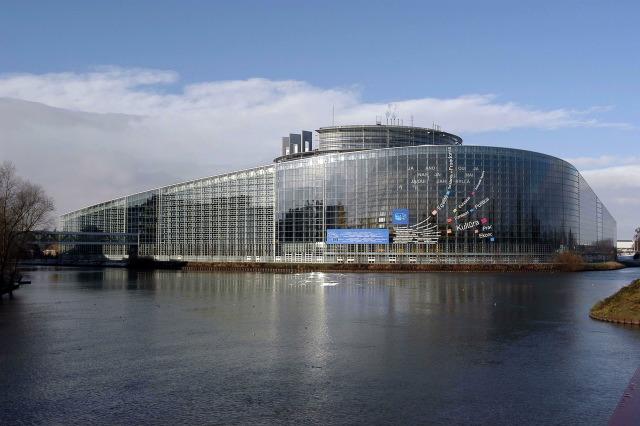One Seat - a breakthrough for a digital EU?

In case anyone missed it, the end of last week saw European leaders in Brussels to agree to the framework for an “amending” treaty to reform the way European institutions work. As Gideon Rachman has so equolently pointed out in the FT, the compromises on those pesky institutional issues return to the golden age of EU “obfuscation”. We have given up on seeking to get the citizen to understand the details of qualified majority voting in Council and the rotating presidency (thank god).
One issue that was not on the agenda, but clearly that citizens do understand and do not like is the seat of the European Parliament as over one million of them have signed up to an online campaign calling for the Parliament to have one seat (in Brussels).
For the uninitiated, the European Parliament conducts most of its business in Brussels (committees, groups) but once a month around five thousand MEPs, Parliamentary staff, journos and lobbyists travel down to Strasbourg to a second Parliament building for three days of Parliamentary business.
There is some good and bad in this. The whole exercise is estimated to create an additional 20,000 tonnes of CO2 a year but Strasbourg’s hotels do a roaring trade – try getting a room in an Parliamentary week. However, it is not so good for Parliament. It is often held up as an example of EU excess and is widely used to belittle the Parliament, despite the institution’s importance as a co-legislator.
Clearly, this is a bugbear for many Parliamentarians who would prefer not to make the arduous trip down the E411 or touchdown at Strasbourg Entzheim International Patch of Grass. But as with many of the EU’s worst excesses, the decision rests firmly with national governments, who agreed upon this arrangement back in Edinburgh in 1992. John Major played the Merkel role at that time and got the compromise between Belgium and France. Unfortunately, the travelling circus can now only be stopped if France agrees to give Strasbourg up, a bold political move that even a bouncing Sarkozy is unlikely to make.
Thus some Parliamentarians started the One Seat campaign to mobilise public opinion behind their choucroute fatigue. They reached one million signatures in September 2006, but their calls have of course fallen upon deaf ears in the institutions – with both Council and Commission refering to the fact that only the Member States acting in unanimity can change the treaty. A standard EU bureaucratic response if ever there was one.
However, the online petition is in itself a break through in using the internet to connect Europe with its citizens across the barriers of geography and language on EU issues. It shows that you can mobilise people (and not just the “specialists, devotees and deviants” of the Brussels bubble) around an issue as abstract as the location of an institution.
The only question for the organisers seems to be what to do with the million strong band of supporters created by the One Seat campaign. Signing an online petition is the first easy transactional step in becoming an activist, but even with a million supporters it is clear not enough to move Sarkozy et al. It may be worth considering how these registered supporters could be now turned into a community of like-minded activists both in the online and offline world in order to continue the campaign.
1
Find Out More
-
Are you fit for 2024? Communicating in a year of change
February 27, 2024



September 04, 2007 | 9:56 PM
[...] September 4, 2007 Alexander Stubb, Finnish EPP member, guest blogs for the Economist this week. This being the first Strasbourg week of the new school term, his entry laments the regular treks down to the picturesque Alsatian capital that we have highlighted in the past. [...]